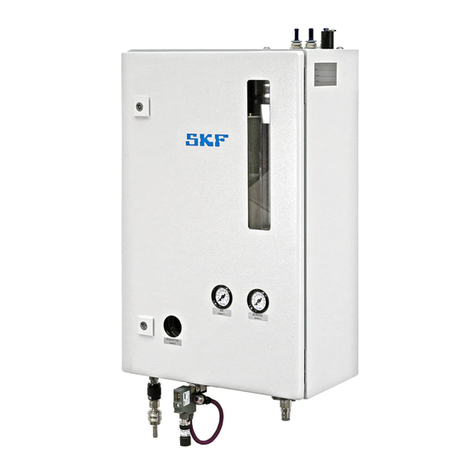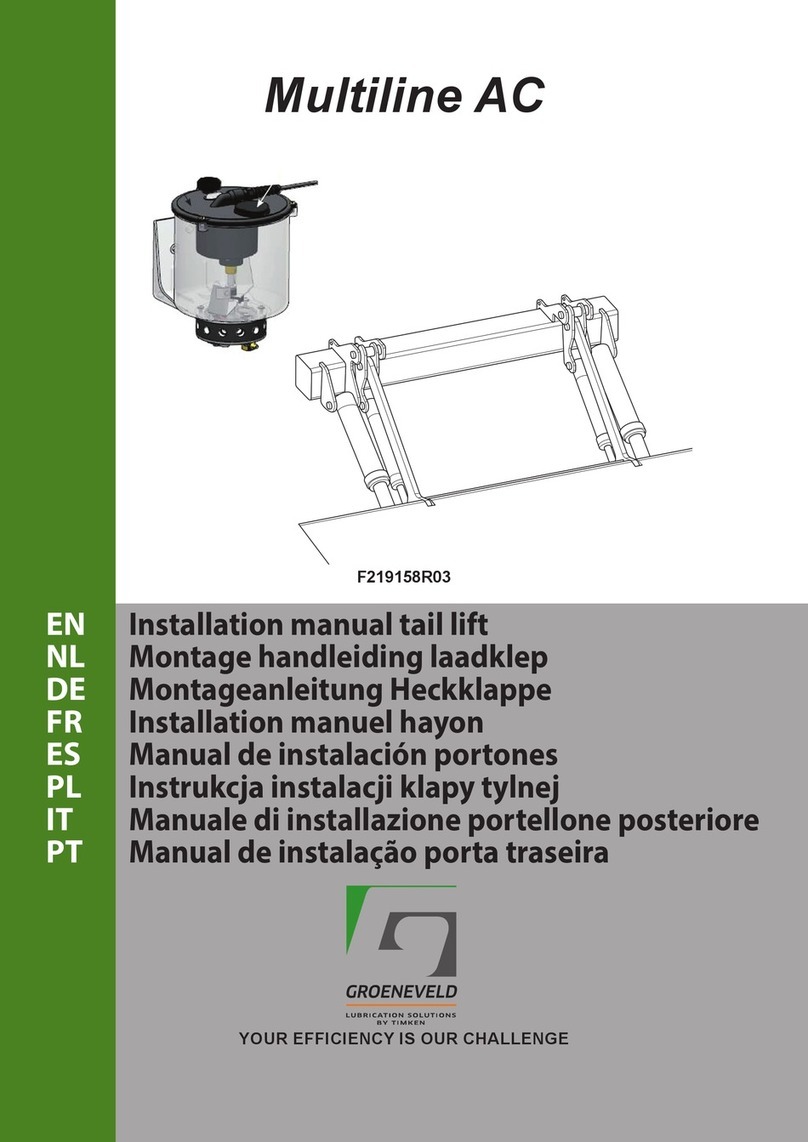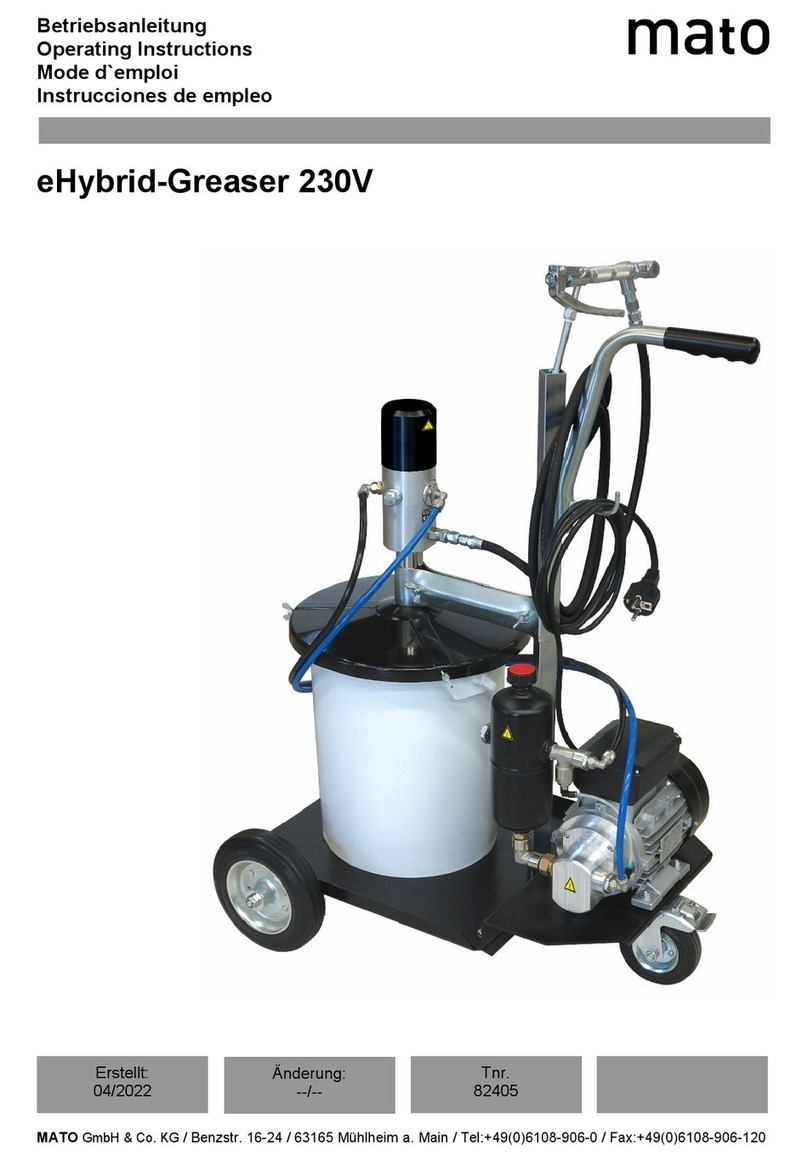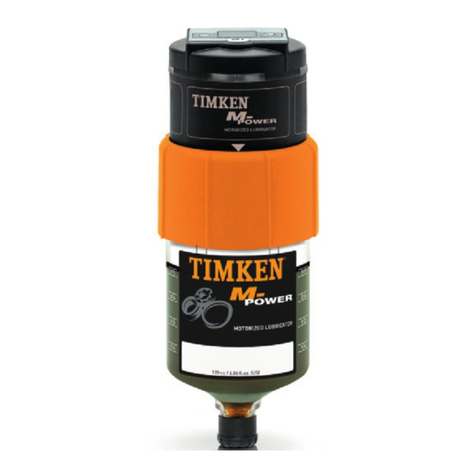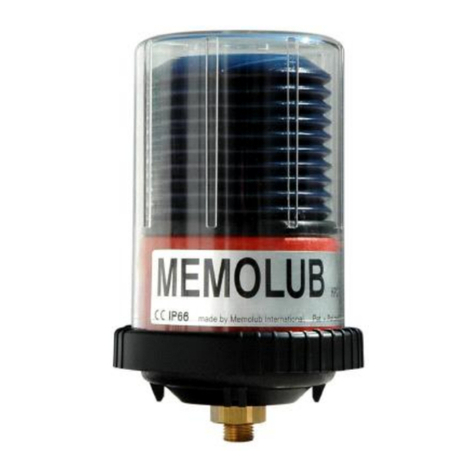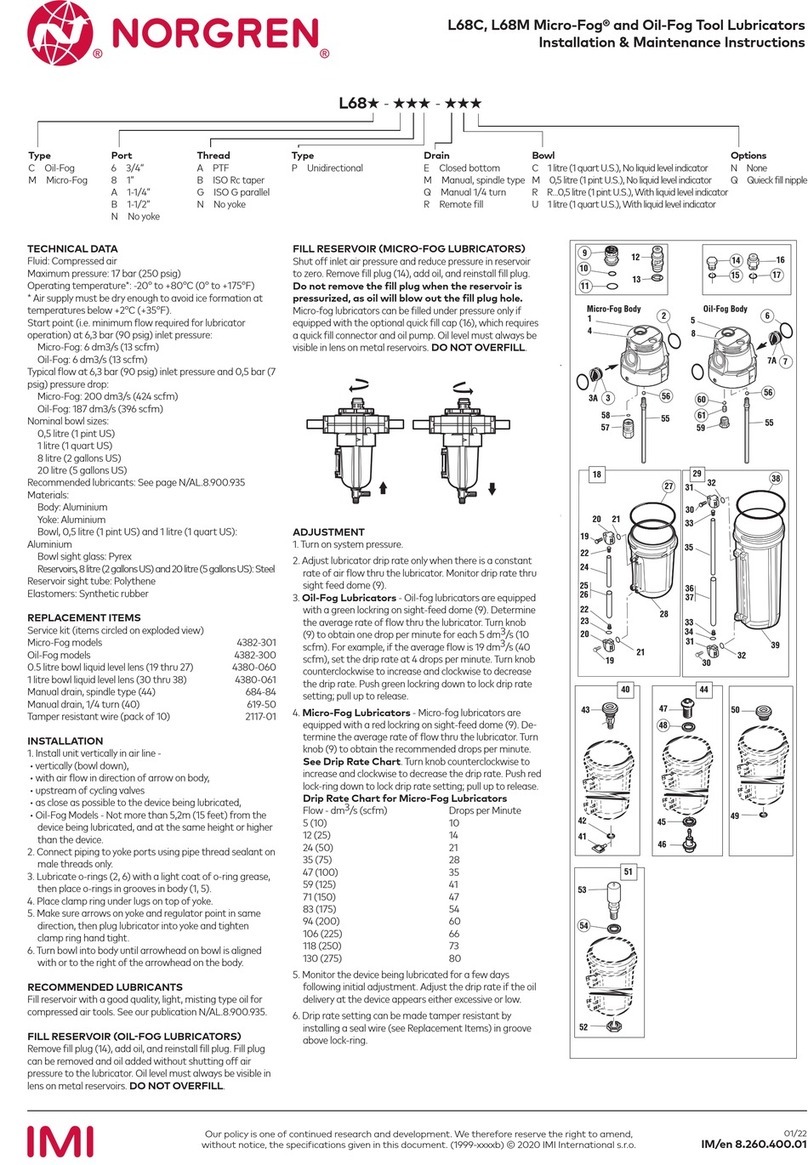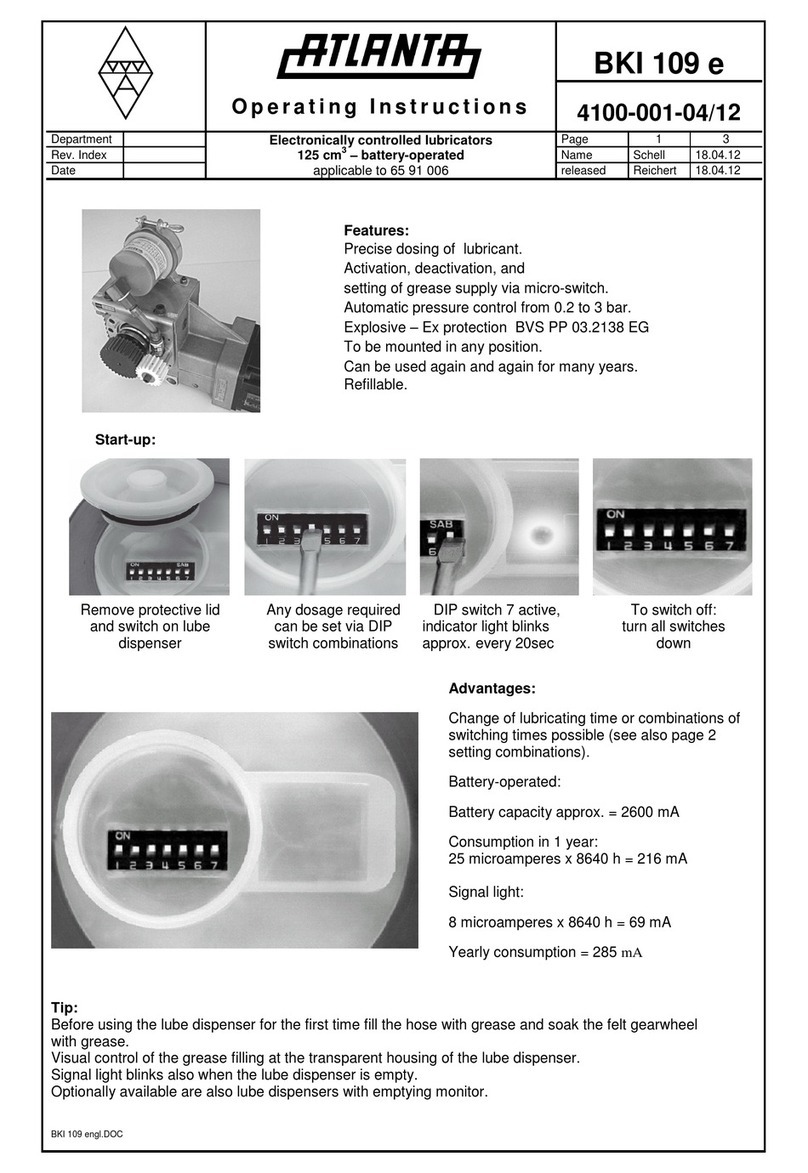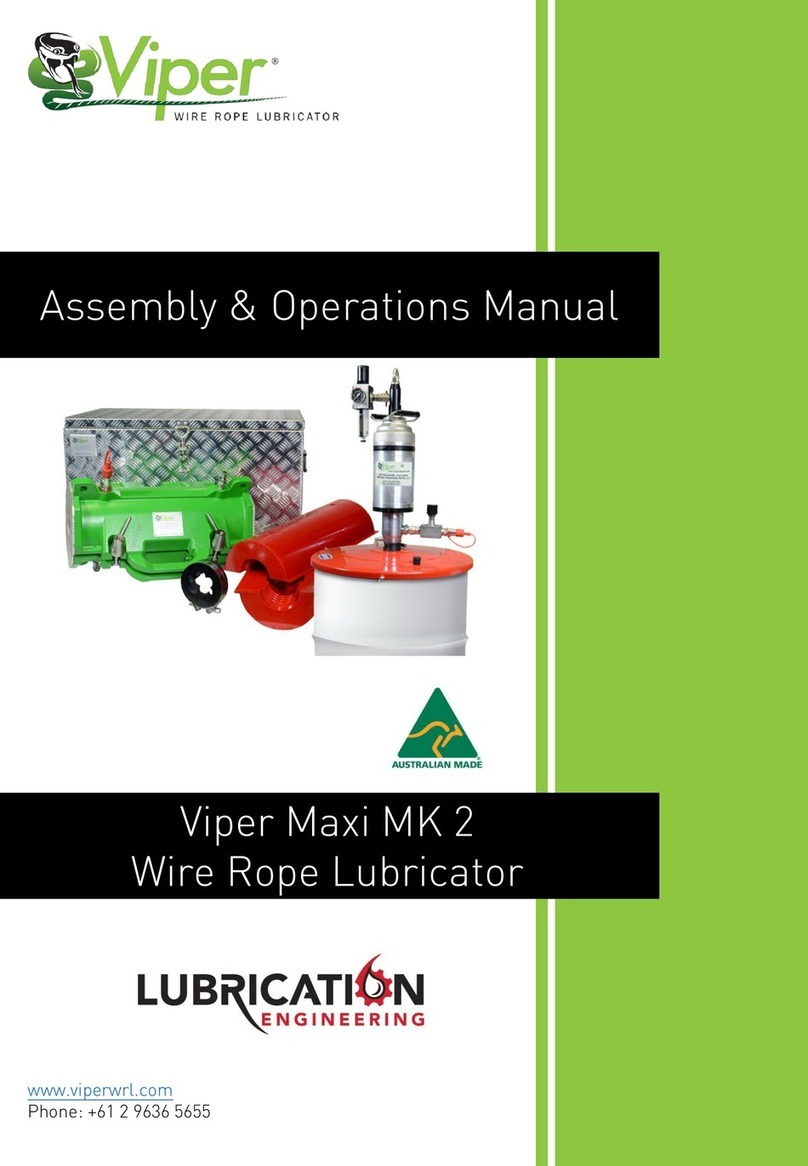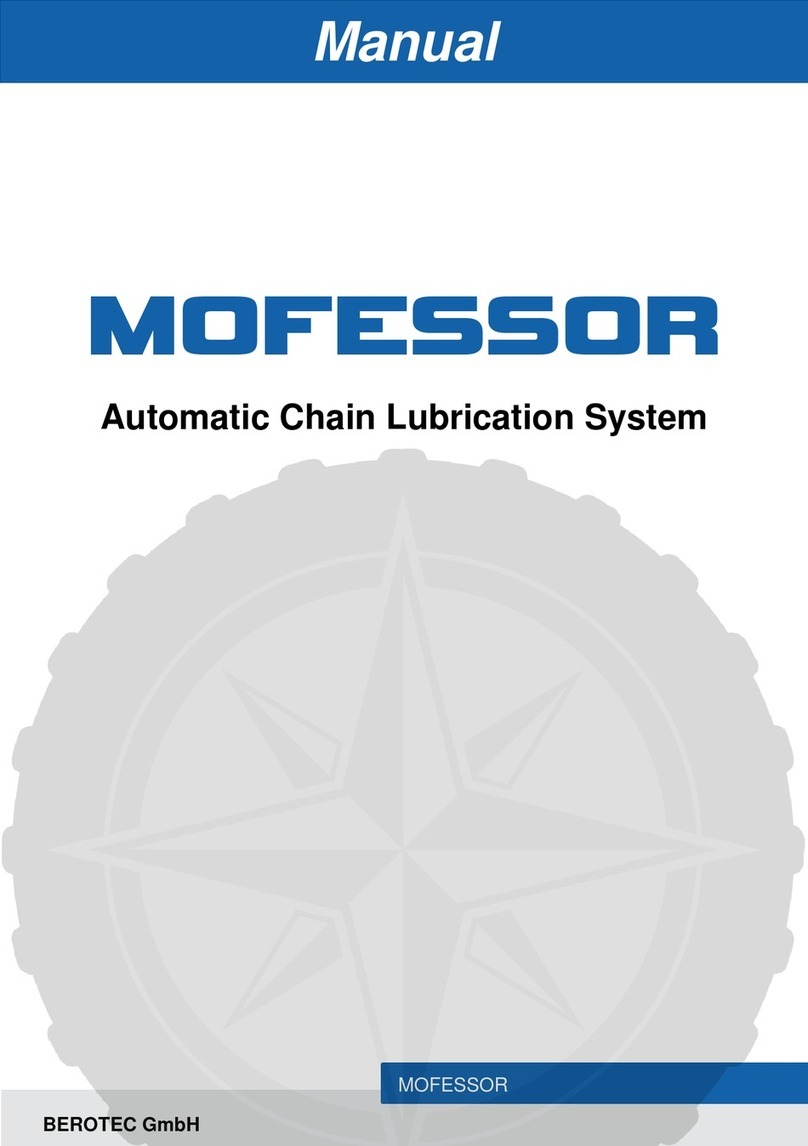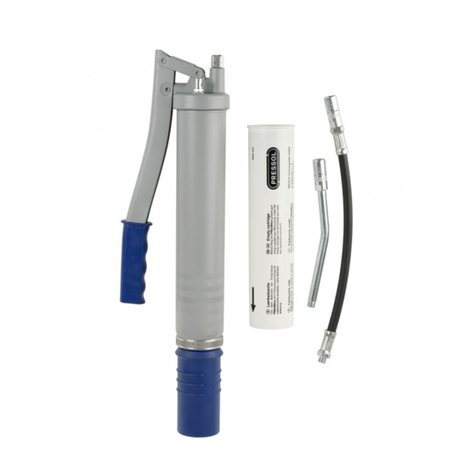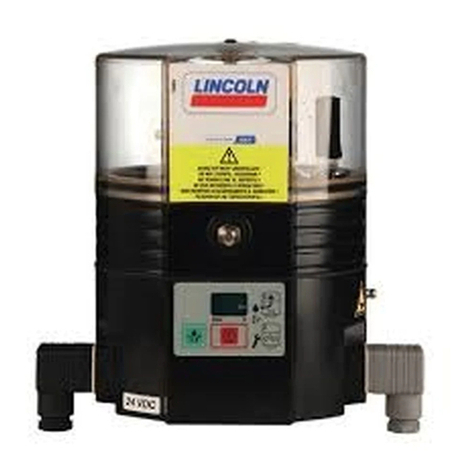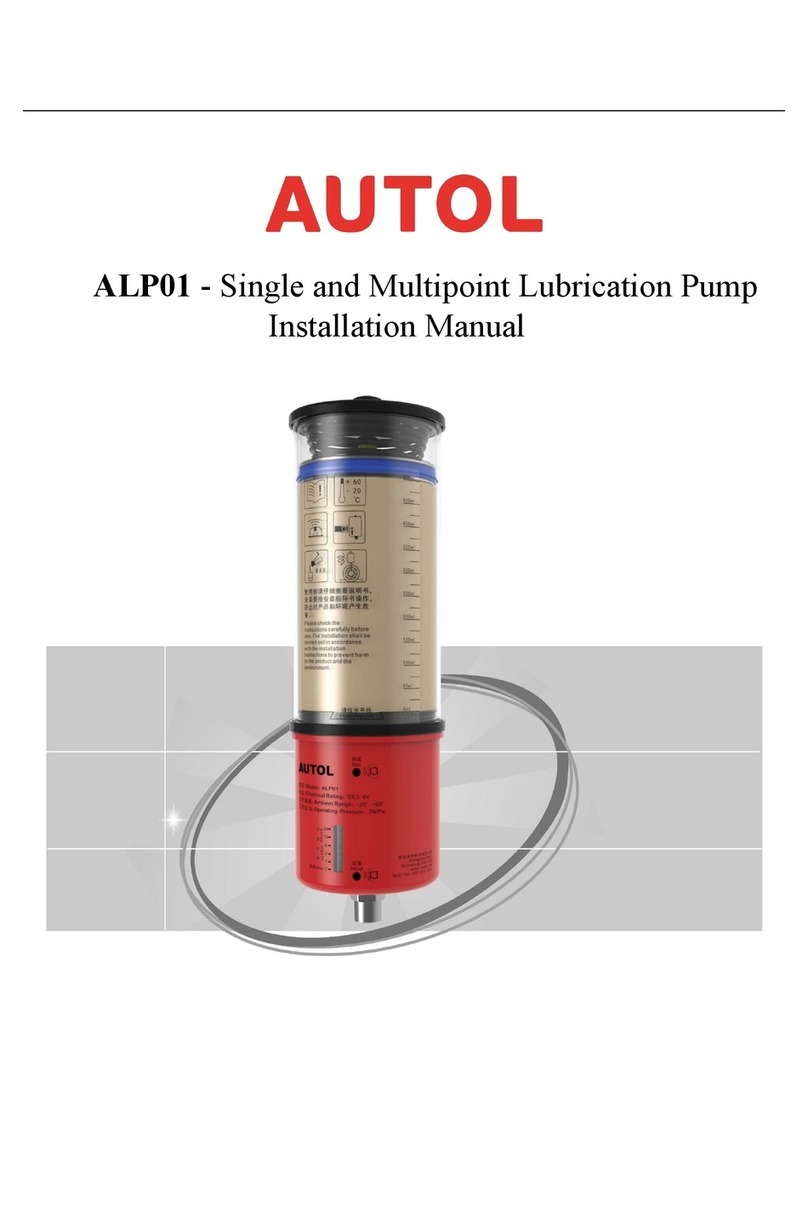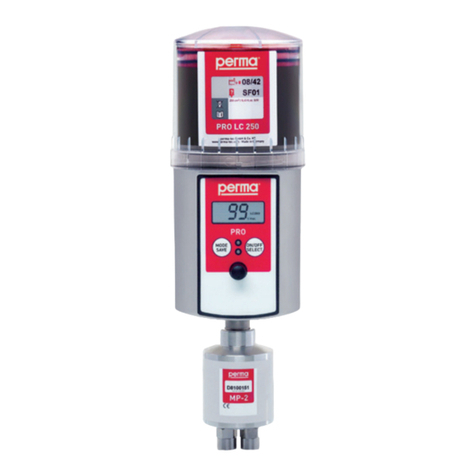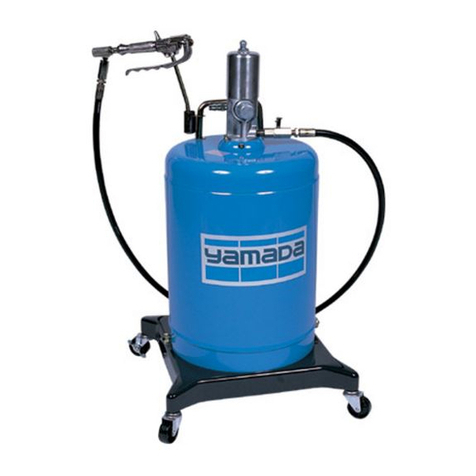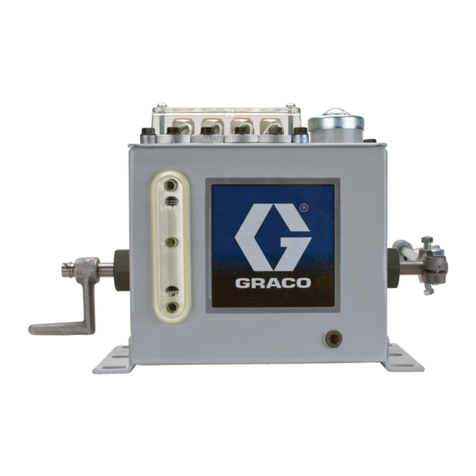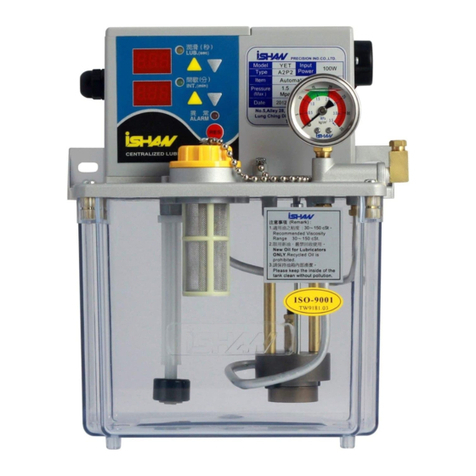
THE LEADER IN OIL MIST TECHNOLOGY
- 8 - 77900994 REV 0 February 27, 2006
MATERIAL SAFETY DATA SHEET
Lubrication Systems Company
PAGE: 2
REVISION: 11/24/03
MSDS NO.: 30868
LubriMist®Synthetic Oil –
===============================================================================
SKIN CONTACT:
Immediately flush with large amounts of water; use soap if available.
Remove contaminated clothing, including shoes, after flushing has begun. If
this material is injected into or under the skin, or into any part of the body,
regardless of the appearance or size of the wound, the individual should be
evaluated immediately by a physician as a surgical emergency. Even
though initial symptoms from high pressure injection may be minimal or
absent, early surgical treatment within the first few hours may significantly
reduce the ultimate extent of injury.
INHALATION:
Using proper respiratory protection, immediately remove the affected victim
from exposure. Administer artificial respiration if breathing is stopped. Keep
at rest. Call for prompt medical attention.
INGESTION:
First aid is normally not required.
===============================================================================
SECTION 5 FIRE-FIGHTING MEASURES
===============================================================================
FLASH POINT: 480 Deg F. METHOD: PMCC ASTM D93 NOTE: Typical
FLAMMABLE LIMITS: NOTE: Not Available
AUTOIGNITION TEMP.: NOTE: Not available
GENERAL HAZARD
Low Hazard, liquid can burn upon heating to temperatures at or above the
flashpoint. Toxic gases will form upon combustion. "Empty" containers
retain product residue (liquid and/or vapor) and can be dangerous. DO NOT
pressurize, cut, weld, braze, solder, drill, grind, or expose such containers to
heat, flame, parks, static electricity, or other sources of ignition; THEY MAY
EXPLODE AND CAUSE INJURY OR DEATH. Empty drums should be
completely drained, properly bunged and promptly re-turned to a drum
reconditioner, or properly disposed of.
FIRE FIGHTING
Use water spray to cool fire exposed surfaces and to protect personnel.
Isolate "fuel" supply from fire.
Use foam, dry chemical, or water spray to extinguish fire.
Respiratory and eye protection required for fire fighting personnel.
DECOMPOSITION PRODUCTS UNDER FIRE CONDITIONS
Fumes, smoke, Carbon Monoxide (CO) and Oxide of Nitrogen (Toxic)
===============================================================================
SECTION 6 ACCIDENTAL RELEASE MEASURES
===============================================================================
LAND SPILL
Eliminate sources of ignition. Prevent additional discharge of material, if
possible to do so without hazard. For small spills implement cleanup
procedures; for large spills implement cleanup procedures and, if in public
area, keep public away and advise authorities. Also, if this product is subject
to CERCLA reporting (see Section 15 REGULATORY INFORMATION)
notify the National Response Center.
===============================================================================
Continues on page 3
